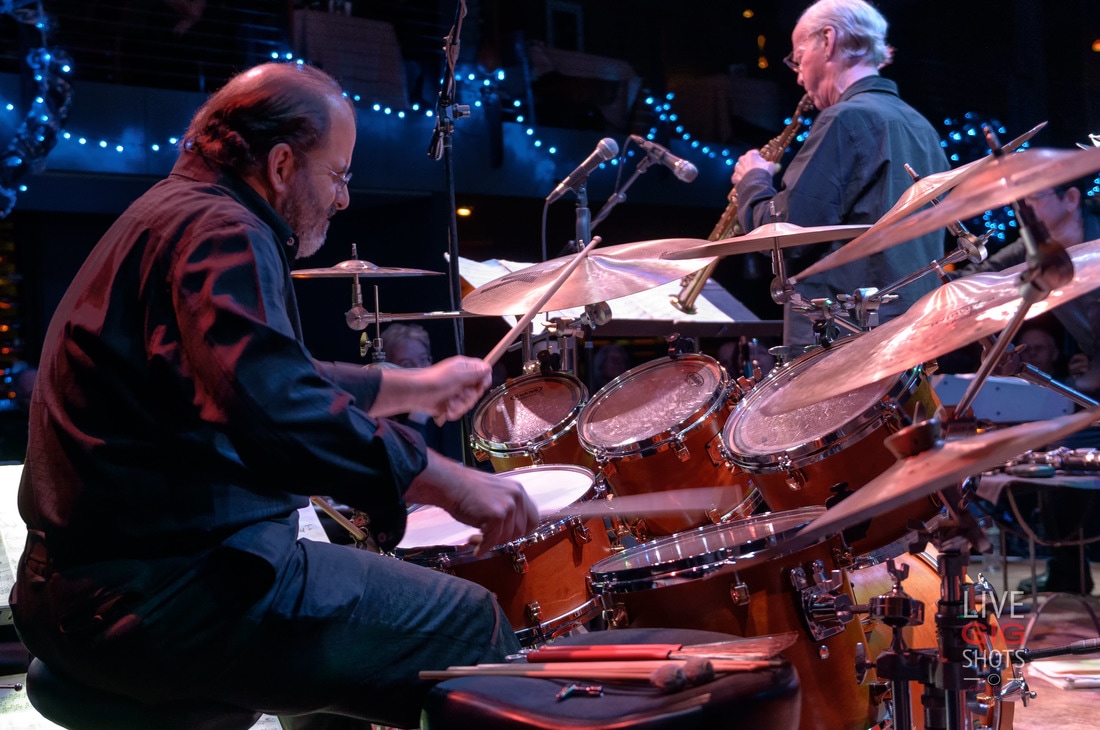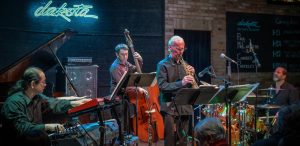
‘His tunes spread the gamut’: Jon Krosnick of Charged Particles discusses Paul McCandless, their forthcoming show and his broad-ranging pursuits
Playing jazz (and doing so well) is a tall order. For many musicians it’s a lifelong pursuit: a journey of self-discovery involving meticulous practice, careful observation and unwavering dedication. Some players immerse themselves in this single discipline, others balance it with an array of jobs, hobbies and interests. Charged Particles drummer Jon Krosnick is one of the latter. An experienced and accomplished drummer and bandleader: he is also a professor of Communication, Political Science and Psychology at California’s Stanford University. He lectures on such topics as public opinion on climate change and the optimisation of survey questionnaires. Playing with Paul McCandless therefore, is just one of the incredible things his working life involves. We spoke to Jon about the balance of his work, the brilliance of McCandless and what California holds for jazz musicians, ahead of Paul McCandless & Charged Particles’ appearance at Band on the Wall on Sunday 10th June.
For many musicians, your friend Peter Erskine being a good example, music consumes their working life: teaching, playing, writing etc. all revolving around musical goals. You’ve been able to balance music with Social Psychology, Political Science and other subjects. How do you manage to spin so many plates and do you find the different disciplines complement each other, or help you not to become tired of a particular pursuit?
JK: ‘You are right that I’m spinning many plates – a wonderful metaphor. And for me, it’s a joy and a privilege to be able to do so. I love everything I do, and the time I spend as a musician energizes the time I spend as a scientist, just as the time I spend as a scientist energizes my time as a musician. There’s no risk that I’ll get tired of anything any time soon. I feel very fortunate to be making music with amazingly talented bandmates and playing for wonderful audiences around the world. And our visit to Manchester will be no exception, I’m sure.’
You’ve played with some of the all time greats in contemporary jazz and classical music. Where does Paul McCandless sit in your personal view of jazz’s ‘hall of fame’ – how might you describe him to a jazz fan who has never heard him play?
JK: ‘Paul is one of the true living treasures of music (of all genres). Listening to him play just a few notes is electrifying, because he is such a super talent. And hearing a whole night of his playing always brings audiences to their feet. His approaches to improvisation and compositions are unique – sensitive, warm, thoughtful, and also hard-hitting as well. Trained as a classical oboist, he chose jazz and truly revolutionized the music with his group, Oregon, which plays chamber jazz (oboe/English horn/penny whistle/soprano saxophone, acoustic guitar, acoustic bass, drums). With Charged Particles, Paul is playing his own compositions with a traditional rhythm section (piano, bass, drums), and those compositions are always understandable and never predictable to audiences. He has legions of fans who have been listening to him for decades and loving his musical voice – and for good reason. He can make your heart melt, and he always makes you smile.’
Charged Particles have been together for roughly 25 years. What brought you together and helped you to bond as musicians and do you feel there’s anything the trio is yet to achieve, musically or otherwise?
JK: ‘Yes, this band has been going for a long time! We have gotten to know each other well through years of traveling together, and fortunately, we really like and appreciate each other as people and as musicians. So that’s a fundamental necessity. Then on top of that, we share a vision of the music we like and a willingness to work hard to compose and learn to play exciting, moving, and challenging material. So the band is always evolving musically. We have been performing special projects in recent years with guests, including playing the music of Michael Brecker with saxophonist Tod Dickow and performing with vocalist Rocio Guitard. And with each year, we’ve been lucky to have more and more exciting performing opportunities internationally, plus doing teaching with high school and university students. So we’re looking forward to composing more, expanding our performance repertoire, and visiting more audiences. No sign of slowing down yet!’
Is California the perfect place for a jazz musician to be based in today’s musical world? Given the option of a musical sabbatical, where in the world might you like to go?
JK: ‘Great music is everywhere these days, but it’s true that California has some really great people living here and playing here. San Francisco has an organization called SFJAZZ, that presents performances seemingly every week all year long, in addition to famed clubs like Yoshi’s. And the scene has attracted an amazing group of creative and talented players, with special expertise in Latin jazz. So there’s great music to hear around here almost every night. Los Angeles is also like this – a stunning group of players are based there and working together to create new music and performing regularly. Plus, California is a beautiful place to spend your days while waiting to hear music at night! As a player, these are great places to be, because the audiences are so supportive and enthusiastic.’
No material is off limits for musicians of your calibre. When assembling a set with Paul, what tends to go in – do you consider standards, Oregon material, reimagine solo or big band works…or all of the aforementioned?
JK: ‘We play Paul’s own compositions during most of the night (but we might throw in an original tune or two by the trio). His tunes spread the gamut – from funky grooves to samba and baio to intense swinging to elaborate through-composed pieces that have no stylistic label. There is also a portion of the show that bring out the romantic side of all of us. We spend some time in the mysterious world of complete improvisation, never knowing exactly what’s going to happen. And it’s fair to call one of our pieces a “tone poem”. Yes, there will be a little material associated with Oregon, but interpreted through the Charged Particles lens. Audiences can count on lots of variety, lots of surprises, and an opportunity to see a true master at work.’







